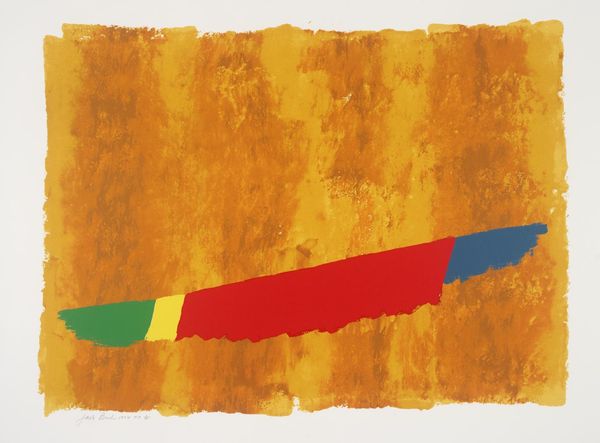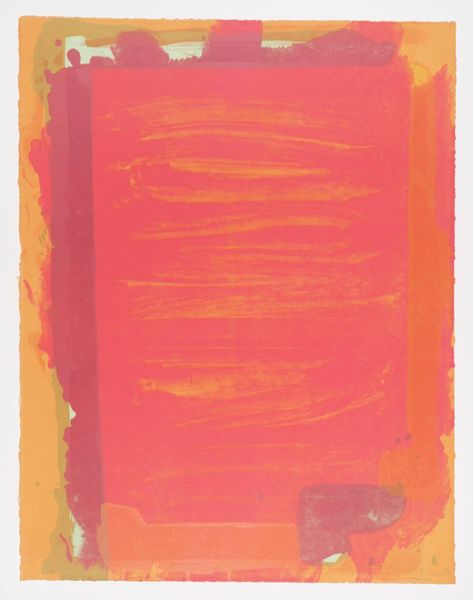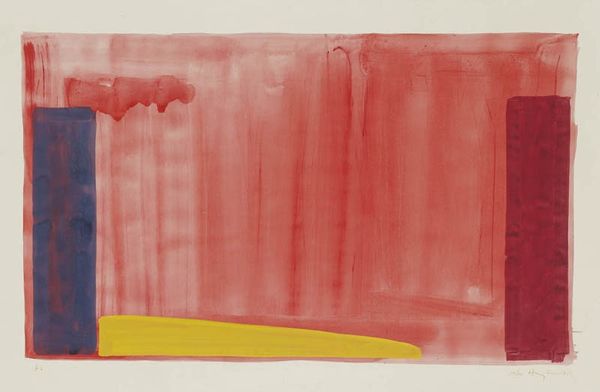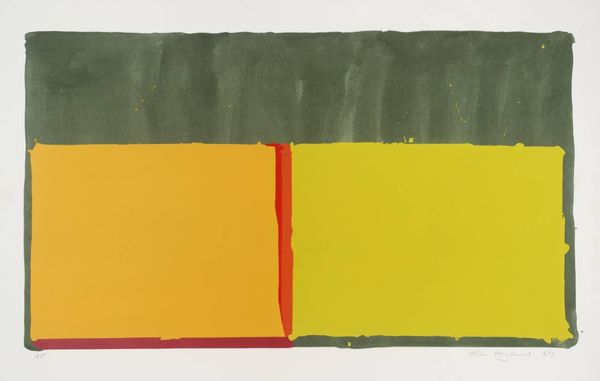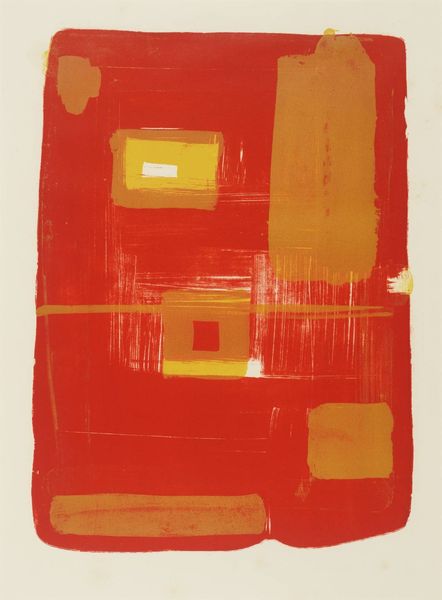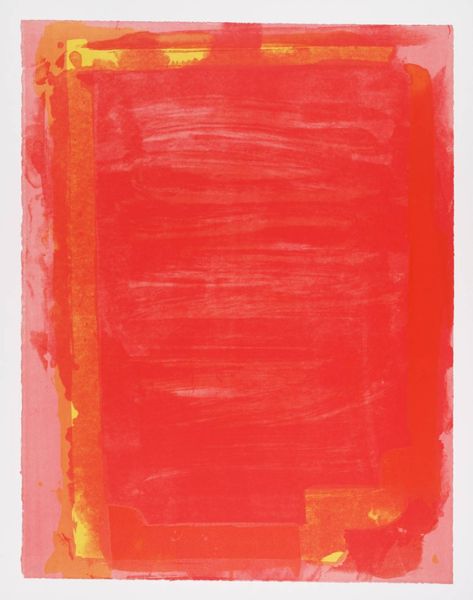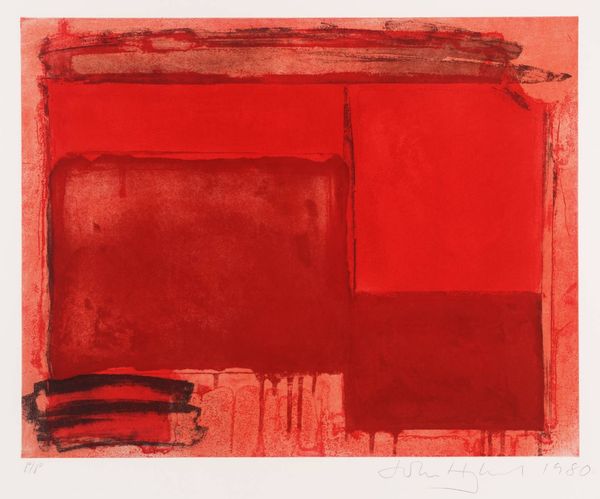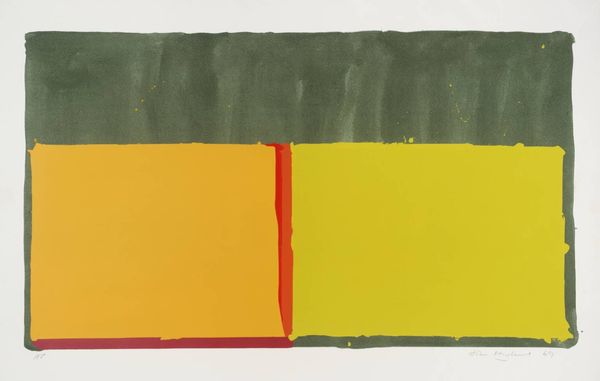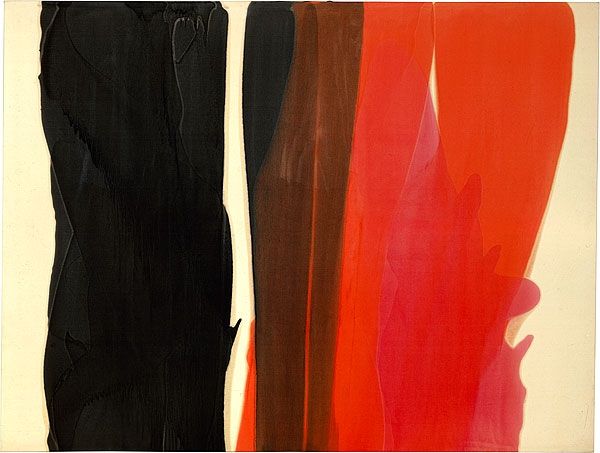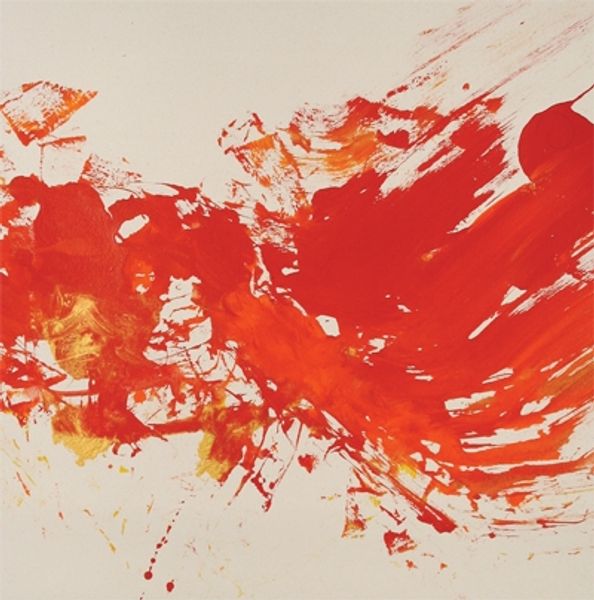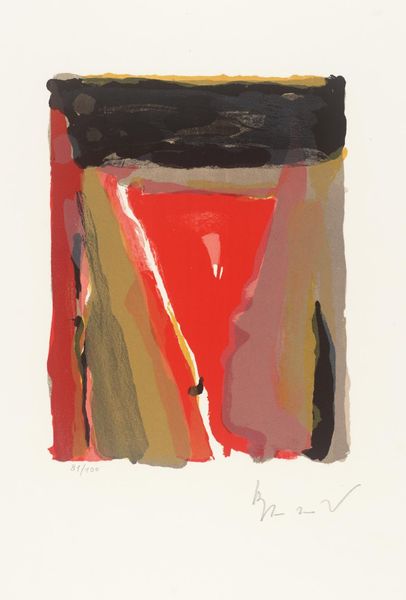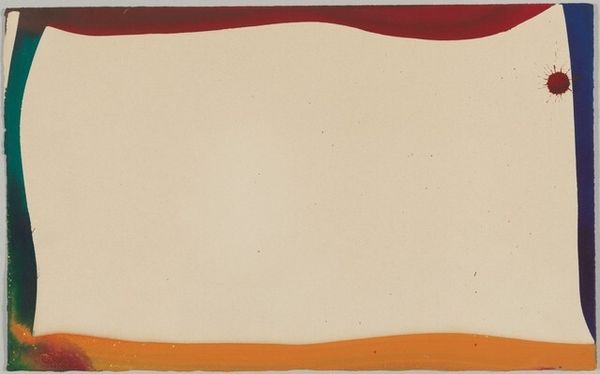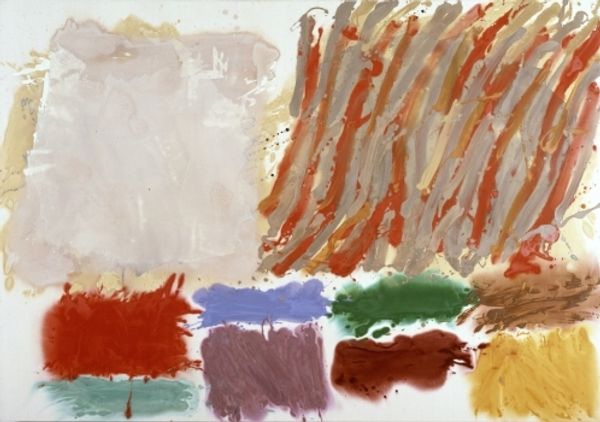![[title not known] by Patrick Heron](/_next/image?url=https%3A%2F%2Fd2w8kbdekdi1gv.cloudfront.net%2FeyJidWNrZXQiOiAiYXJ0ZXJhLWltYWdlcy1idWNrZXQiLCAia2V5IjogImFydHdvcmtzL2NjOGFkNzJlLTE5NDYtNGI1NS04OTRkLTQ4M2RjMjgxOTBmNC9jYzhhZDcyZS0xOTQ2LTRiNTUtODk0ZC00ODNkYzI4MTkwZjRfZnVsbC5qcGciLCAiZWRpdHMiOiB7InJlc2l6ZSI6IHsid2lkdGgiOiAxOTIwLCAiaGVpZ2h0IjogMTkyMCwgImZpdCI6ICJpbnNpZGUifX19&w=3840&q=75)
Dimensions: unconfirmed: 670 x 800 mm
Copyright: © Estate of Patrick Heron. All Rights Reserved, DACS 2014 | CC-BY-NC-ND 4.0 DEED, Photo: Tate
Curator: This is an untitled work by Patrick Heron, a British artist born in 1920. It resides in the Tate collection, and the dimensions are around 67 by 80 centimeters. Editor: I immediately notice the striking contrast between the red and yellow hues. The vertical orientation of the brushstrokes creates a sense of dynamism and movement, almost like standing in heavy rain. Curator: Heron was deeply engaged with the political climate of his time, and his move towards abstraction was in part a rejection of traditional representational art forms that he saw as complicit in upholding existing power structures. Editor: I see that, but I also appreciate how the formal elements work together. The texture is intriguing; the layering creates depth and visual interest, even if the social commentary were removed. Curator: Considering the period, and the artist’s known views, the bold use of color can be seen as a challenge to the conservative artistic establishment, a declaration of autonomy. Editor: Whether intentional or not, the color choices elicit strong emotional responses. It's a successful study of verticality and color interplay. Curator: Precisely, Heron’s engagement with social issues and his innovative abstraction techniques make his work incredibly compelling. Editor: I agree. Regardless of its possible intention, I'm captivated by its pure visual energy.
Comments
Join the conversation
Join millions of artists and users on Artera today and experience the ultimate creative platform.
tate 7 months ago
⋮
The suite of prints from which this etching is taken is one of the last works Patrick Heron made before his death. Over a period of three months between December 1998 and March 1999, Heron worked in his studio with the printer Hugh Stoneman, making drawings for fifteen works in total, from which he selected the eleven plates that make up the portfolio. He finished the drawing for the colophon page on the morning of the day he died. Heron approved the proofs and decided on a sequence for presenting the works shortly before his death. The etchings were printed posthumously, overseen by the artist’s two daughters.
